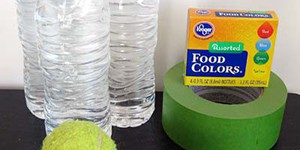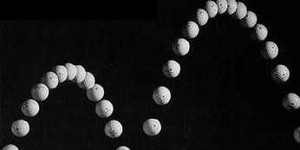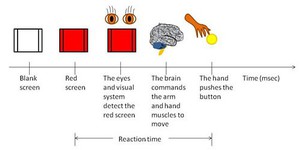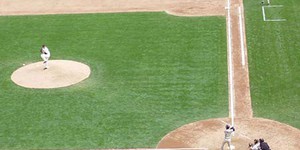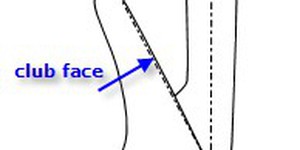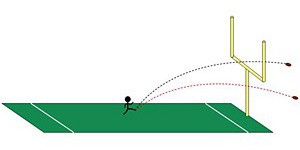Others Like “The Biomechanics of Pitching” (top 20 results)
|
"Hey kids, step right up! Toss this ball and win a prize!" shouts the carny barker. Sounds easy enough—until you try it. Why are those "simple" games at the fairs, carnivals, and boardwalks so hard? Is it really lack of skill or coordination or do those concessionaires use some basic laws of science to help them set up the games in their favor? This science fair project can help you find out for yourself.
Read more
Many sports use a ball in some way or another. We throw them, dribble them, hit them, kick them, and they always bounce back! What makes a ball so bouncy? In this experiment you can investigate the effect of air pressure on ball bouncing.
Read more
When someone yells, "Think fast!" and throws you a ball, are you able to catch it? When the bell rings at the end of class, are you the first one out of your seat? Can you make it through a sudden hairpin turn in a video game without crashing? If so, then you likely have quick reaction times. In this science fair project, you'll look at reaction times (how fast people react to sensory events), and see if people who play video games have faster reaction times than those who do not.
Read more
Swish! What a great sound when you hit the perfect shot and get nothing but net. Here's a project to get you thinking about how you can make that perfect shot more often.
Read more
Here's a sports science project that shows you how to use correlation analysis to choose the best batting statistic for predicting run-scoring ability. You'll learn how to use a spreadsheet to measure correlations between two variables.
Read more
Did you know that our brains are split into two parts, right inside our head? One half is the left brain and the other half is the right brain. Some people use one half of the brain more than the other half when they are doing certain activities, like talking or reading. The half that is used is sometimes tied to which hand they prefer to use. If someone likes to use their right hand when doing an activity, like drawing or throwing a ball, do they also prefer to use their right ear, eye, or…
Read more
Think of hitting a baseball, heading a soccer ball into the net, or hitting a tennis ball with a racquet. Where the ball goes depends on...what? You can set up a simple model to start your investigation. You'll need a marble, a flat piece of wood, a flat piece of cardboard, a pencil, a ruler, a protractor, and a level surface. Lay down the cardboard down on a level surface and set up the flat piece of wood at one edge. The wood will act like a wall, and you're going to roll the marble at…
Read more
For example, think of hitting a baseball, heading a soccer ball into the net, or hitting a tennis ball with a racquet. Where the ball goes depends on...what? You can set up a simple model to start your investigation. You'll need a marble, a flat piece of wood, a flat piece of cardboard, a pencil, a ruler, a protractor, and a level surface. Lay down the cardboard down on a level surface and set up the flat piece of wood at one edge. The wood will act like a wall, and you're going to roll…
Read more
If your idea of a great weekend morning is taking some practice swings at a driving range, or heading out to the links to play a round, this could be a good project for you. This project is designed to answer the question, what is the relationship between club loft angle and the distance that the ball travels when struck.
Read more
Did you know that throwing, kicking, and punting a football all involve the science of projectile motion? A star NFL® quarterback, kicker, and punter each need to have a very good understanding of how a football moves through the air in order to help them win games. In this science project, you will set up a rubber band-powered catapult to represent a field goal kicker, and study how changing the distance from the goalposts affects how hard it is to accurately kick a field goal.
Read more
|
Explore Our Science Videos
Paper Ball Run: 2022 Engineering Challenge
Paper Bridges STEM Activity
The First Cartoon: Make Your Own Thaumatrope!


